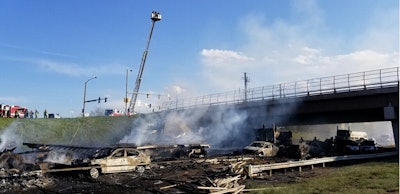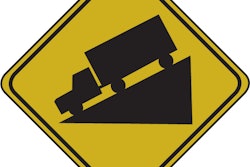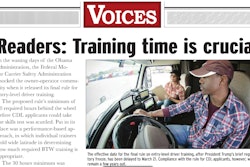
For days now it has been debated — who was at fault for the horrific crash in Colorado that claimed the lives of loved ones? It is easy to blame the driver, especially for those of us who are professionals. He was the captain of his ship, and ultimately that is where the buck stops. As we step back and look at the things leading up to such a tragic outcome, the blame game begins and pointing fingers become inflated with anger. Four people lost their lives, and someone needs to pay. At once, nothing done in the aftermath of such a tragedy can ease the pain of the families who lost loved ones.
However, it does need to be analyzed, to avoid future tragedies from happening if at all possible.
The driver’s company had several equipment violations and its drivers had been cited for not being proficient with the English language. I have heard it said that improper training was most likely a major contributor to the accident, that a paucity or complete disregard and caring for those around him may have resulted in the horror suffered. Perhaps all of this is true, perhaps the company like any other small business is just trying to survive and offer someone else a chance to make something of themselves. Perhaps like many drivers before him, Mr. Aguilera-Mederos simply did not understand the mountain, and how deceptive it can be. Maybe it does come down to training, or the lack thereof. In all honesty, I would guess a combination of all the above is where lie the seeds of such a horrific end to five people.
Yes, I said five. Four were killed, and the fifth will most likely spend a good part of his life in prison.
While we can sit back and armchair quarterback the how and why, if we do not take a serious look at those reasons to correct them, this kind of thing will continue to happen again and again.
Why didn’t the FMCSA step in and do something about the company if its violations were extensive? Could anything more have been done to emphasize the need for caution on the mountain? I have been over that stretch many, many times — there are lots of signs to help drivers understand the need for caution. If you enter the scale house there are dozens of accident pictures – instances where drivers did not respect the mountain.
Could it have been driver attitude or a neverending, never-stopping clock ticking, pushing, drive, force, go-run-go? Maybe the ability to objectively step back and look at the clock with the appropriate consideration only comes with maturity. If even so, how does one account for the stark choice between avoiding a collision or accepting you are going to kill someone?
As a driver, you should understand the sheer force of your equipment and come to the decision early on — if it comes down to it, will you choose sacrifice or survival? It is a question each of us must answer every day, before we start our day. Because perhaps one day, such a choice will present itself to us in the moment.
Finally, the question of training. All of us in a way are responsible for what happened. This driver’s company should have offered better training. His peers should have offered advice and mentoring. And the industry as a whole should have made sure he was able to conduct the operation of the vehicle safely with the correct attitude for the job. Yes, the blame falls squarely on the shoulders of a 23-year-old driver, who someone as seasoned as myself would say is still wet behind the ears. Now he’ll probably lose most of his good years in prison simply because he did not understand the gravity of the profession.
We as an industry cannot lay the blame on the government. We cannot cry and moan about government regulation and then push for training legislation and/or regulation. It is our responsibility to train individuals, it is our responsibility to mentor these young, inexperienced drivers.
When it comes to training, anything the government comes up with will no doubt be horribly lacking. (Look at the pre-CDL Entry Level rule coming into play.)
So: I am calling out the leaders within the industry. I am calling out the ATA, the OOIDA, WIT, NASTIC, insurance providers, company owners big and small, state job training centers, and community colleges that offer driver training. Let’s cut through the red tape, get down to brass tactics. Let’s build a training program within our industry that the feds will model, because the standards are high, and expectations are even higher. The lives we save may be those of our own families. Those lives may be our own.










